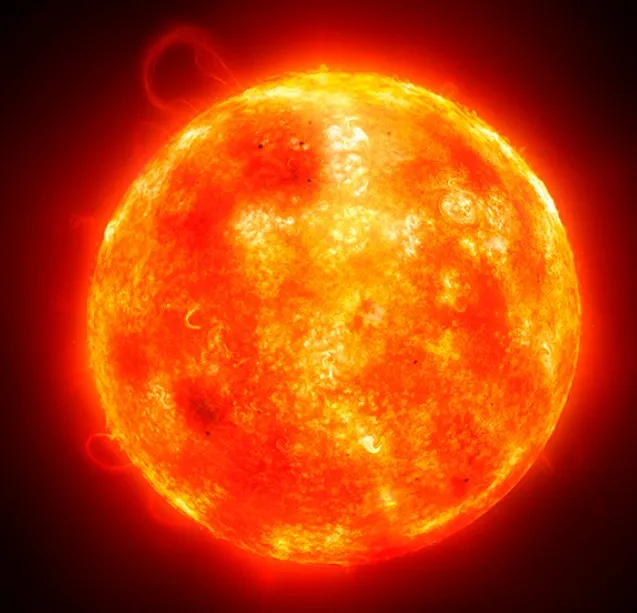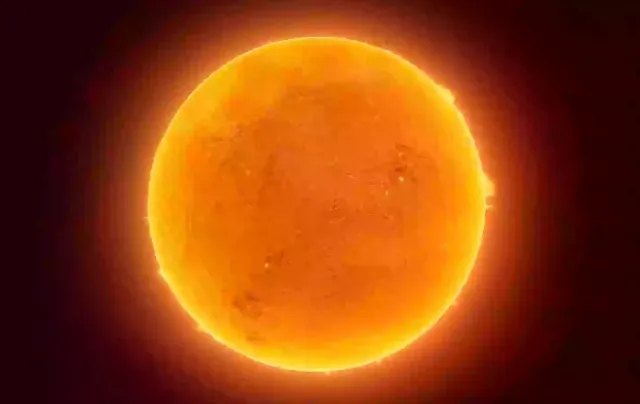Many were shocked to learn the sun isn’t actually yellow, as new insights reveal its true color is much closer to white.
For generations, we’ve been taught to imagine the sun as a bright yellow ball in the sky.
Whether it’s drawn with crayons in elementary school or featured in digital media, yellow has become the default shade we associate with our star.
However, recent discussions and scientific clarification have left many stunned to learn that the sun’s true color isn’t yellow at all.
What is the ‘real color’ of the sun?
Sunlight is a blend of all colors
The sun, like many stars, emits a spectrum of light that spans various wavelengths. This includes red, orange, yellow, green, blue, indigo, and violet.
When combined, these wavelengths form what we perceive as white light. If you’ve ever seen sunlight pass through a prism and separate into a rainbow, you’ve witnessed this full spectrum at work.
Despite this, when people look up during the day, the sun often appears yellow or even orange.
The reason behind this visual shift lies not in the sun itself but in the Earth’s atmosphere.

Atmospheric filtering alters sunlight’s color
As sunlight travels through the Earth’s atmosphere, it interacts with particles and gases.
This process scatters shorter wavelengths, especially blue and violet, more effectively than the longer wavelengths such as red and yellow.
While violet light is scattered even more than blue, our eyes are less sensitive to it, and the excess blue is what dominates the sky’s appearance.
What remains of the original sunlight, after this scattering, appears more red and yellow.

This is especially noticeable during sunrise and sunset, when sunlight travels through a thicker slice of the atmosphere, enhancing the reddish tones.
During midday, though, the sun may appear closer to white, especially when observed from high altitudes or clear conditions.
The sun’s peak emission is green.
From a physics standpoint, the sun’s energy output peaks in the green portion of the visible spectrum.
That doesn’t mean the sun looks green to us—quite the opposite.
Since it also emits strongly across the rest of the spectrum, the combined light ends up appearing white to the human eye.
If the sun only emitted green wavelengths, then yes, we’d see it as green.
But nature rarely works in such narrow bands. Instead, the blend of all visible light waves gives the sun its true appearance: white.

Without the atmosphere, the sun appears white.
When astronauts observe the sun from space, without the interference of Earth’s atmosphere, they report that it looks white, not yellow.
This confirms what physics already tells us: the yellow hue we often see is simply a byproduct of atmospheric scattering, not a trait of the sun itself.
Filters, such as those used in eclipse glasses, can also affect the color we perceive.
Some filters make the sun appear green or blue, not because its light changes, but because of how the lens alters the incoming light.
Science challenges the common misconception about sunlight.
Many social media users expressed surprise when this topic recently gained attention online.
One Reddit user noted the irony, saying basic science is often forgotten.
“This is such a basic thing. Education is getting really bad. No, the sun is not yellow and never has been. It’s yellow when you draw with crayons in 3rd grade. That’s it.”
Another said: “Technically any color is the right answer. The sun’s color gets filtered through our atmosphere, making it look yellow. So purely from the perspective from Earth, the sun is seen as yellow.
“If you’d look at a solar eclipse, the dark glasses sometimes have a green or dark blue hue. It’s the same principle.

The sun’s colored light gets filtered through those glasses, making them appear green or blue at that point.
“From space though, the sunlight does not get filtered by anything, and therefore seems white.”
This prompted a query from one user, who said: “I wonder if this is why most plants are green.”
Another responded with an explanation, writing: “Plants are green because red and blue wavelengths of light are more efficient for photosynthesis, and thus only those are absorbed.
Green is reflected (most of the time); therefore, plants display green most commonly!”